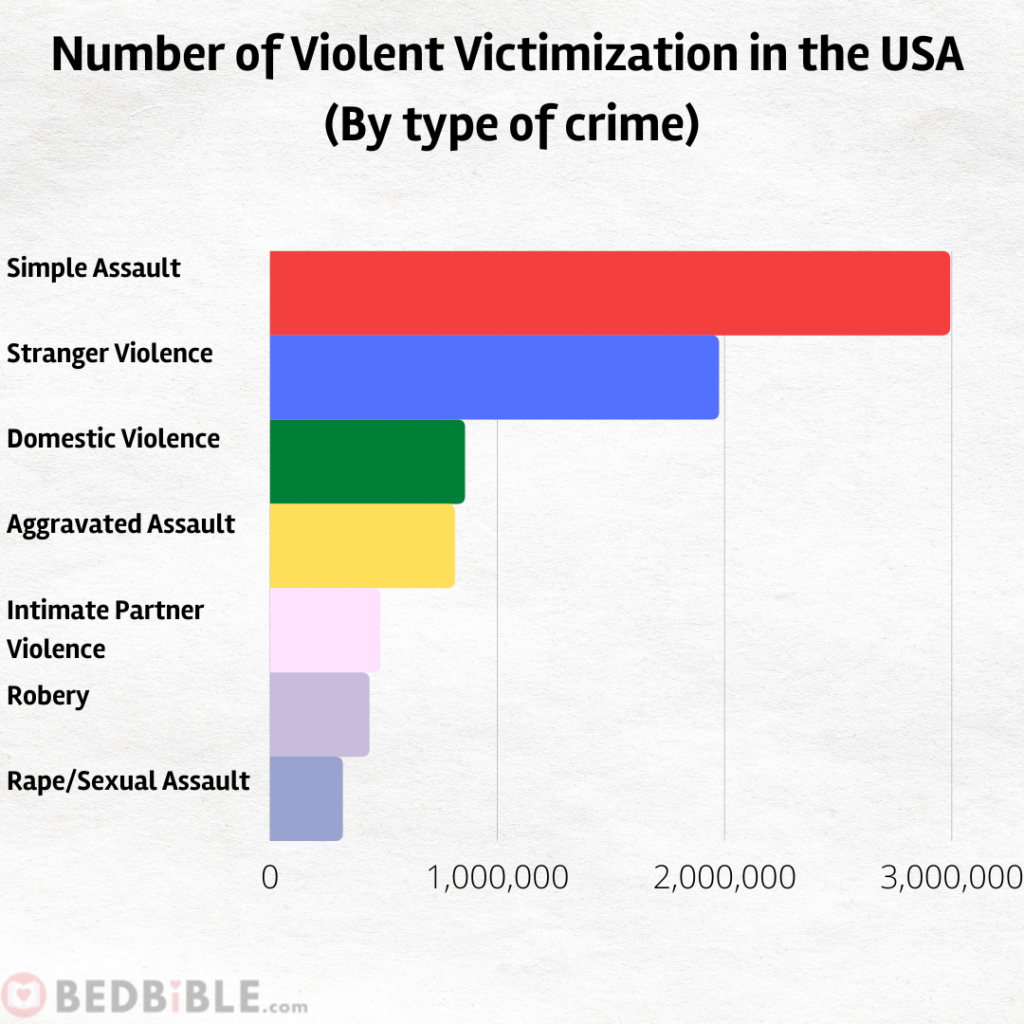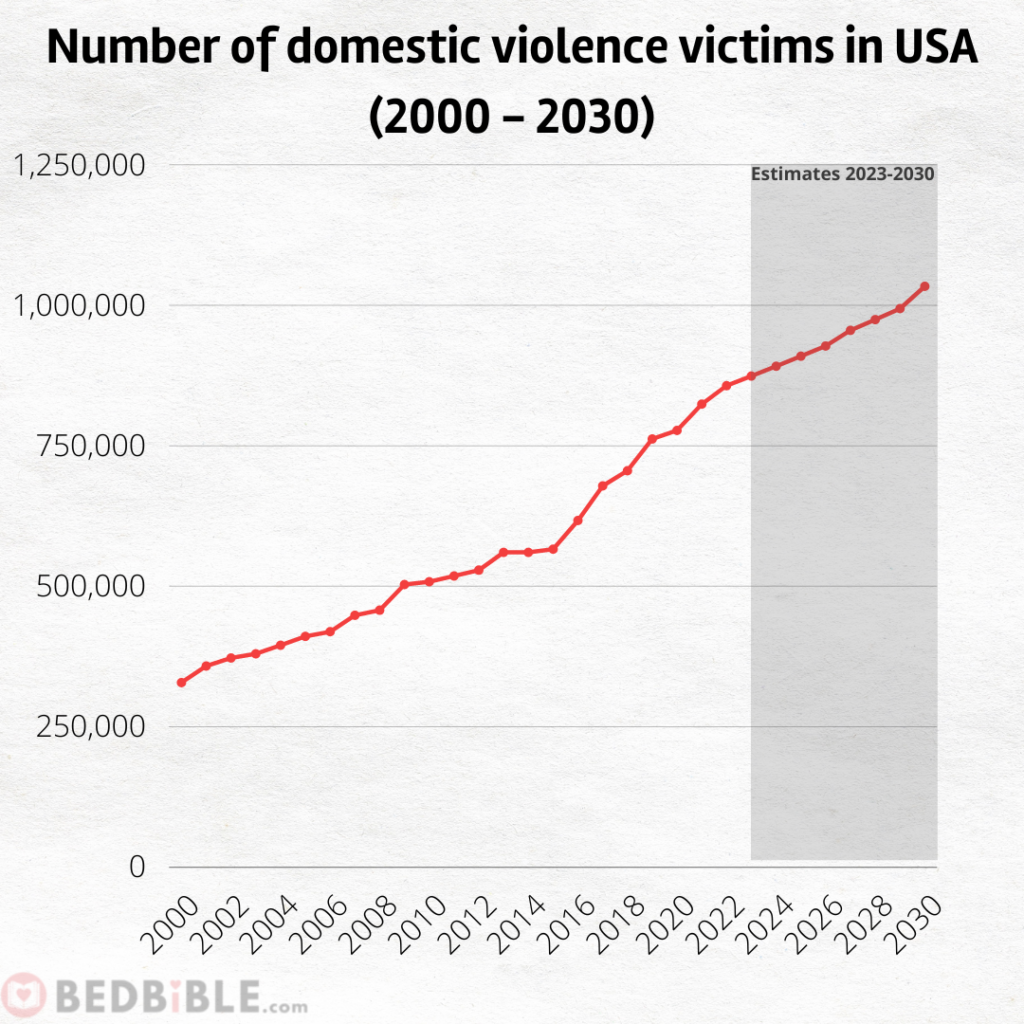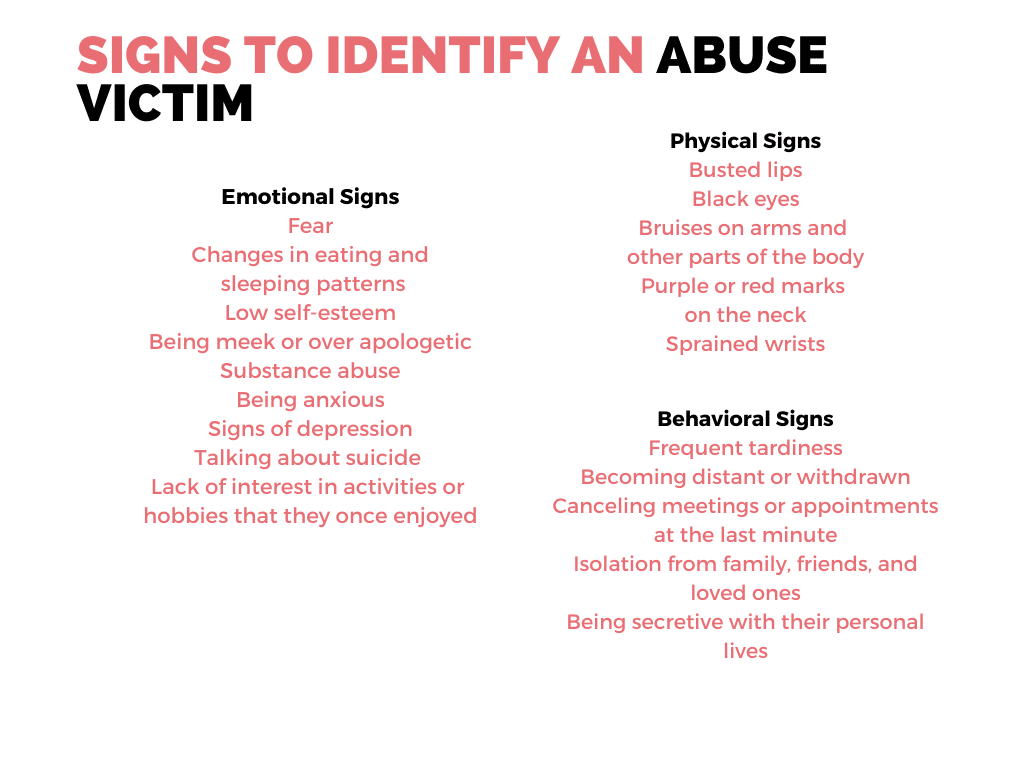![Domestic Violence [Statistics & Facts]](https://wp.bedbible.com/wp-content/uploads/2022/02/Domestic-Violence-Statistics-and-Facts.png)
Domestic violence remains a pressing concern worldwide, affecting countless lives and leaving deep scars.
This comprehensive statistical piece by the Bedbible Research Center sheds light on the various facets of domestic violence, from its types to its prevalence in different demographics.
Delve into alarming statistics that reveal the magnitude of the issue, such as the fact that 20 individuals per minute experience physical abuse from an intimate partner in the U.S., or that the lifetime economic cost of domestic intimate partner violence in the U.S. stands at a staggering $3.6 trillion.
Key Takeaways
- 64% of all domestic violence is; Simple Assault and Stranger Violence
- Over 10 million people worldwide are each year victims of domestic violence.
- 35.6% of women and 28.5% of men will experience physical violence, rape, and/or stalking by their intimate partner
- 20 individuals per minute are experiencing physical abuse from an intimate partner in the U.S.
- More than 20,000 phone calls are made through domestic violence hotlines in the entire country
- 33% of bisexual men, 25% of gay men, and 30% of hetero men will experience domestic violence by an intimate partner
- The lifetime economic cost of domestic intimate partner violence in the U.S. accounted for $3.6 trillion
- Women with disabilities are seen to have a 40% more risk of domestic violence caused by their intimate partners
- 2% of men and 10% of women were victims of stalking by an intimate partner
- Signs to identify victims: Physical signs (Bruises on arms), Emotional signs (Fear), Behavioral signs (Frequent Tardiness)
- Celebrities that have been victims of domestic violence: Tina Turner, Oprah Winfrey, Johnny Depp, Rihanna, Madonna, Shakira
#1 – Types of Domestic Violence in the United States:
- Simple Assault (2,988,770 victims)
- Stranger Violence (1,973,200 victims)
- Domestic Violence (856,750 victims)
- Aggravated assault (812,180 victims)
- Intimate partner violence (484,830 victims)
- Robbery (437,260)
- Rape/sexual assault (319,950)

#2 – Number of Domestic violence victims in the US (2000 – 2030):

#3 – 35.6% of women and 28.5% of men in the U.S. will experience physical violence, rape, and/or stalking by their intimate partner in this lifetime
#4 – 1 in 7 men has been a victim of severe physical abuse by an intimate partner
#5 – 1 in 4 women have experienced severe physical violence by an intimate partner
#6 – 15% of the total violent crimes account for intimate partner violence
#7 – 20 individuals per minute are experiencing physical abuse from an intimate partner in the U.S.
#8 – More than 20,000 phone calls are made through domestic violence hotlines in the entire country
#9 – 1 in 3 bisexual men, 1 in 4 gay men, and 3 in 10 heterosexual men will experience physical violence, rape, sexual abuse, and stalking by an intimate partner
#10 – 61% of bisexual women and 44% of lesbian women experience stalking rape and physical violence
#11 – 3 in 10 heterosexual men experience physical violence, stalking, rape, and sexual violence by an intimate partner
#12 – 61% of bisexual women and 44% of lesbian women experience stalking physical violence, and rape from someone they have an intimate relationship with
#13 – 2 in 5 transgender individuals have experienced coercive control or physical violence from their intimate partner.
#14 – 1 in 15 children are being exposed to intimate partner violence annually (90% of these children have eyewitnessed the violence)
#15 – Nearly half (47.5%) of Alaska Native/American Indian women, 34.4% of Hispanic women, 45.1% of non-Hispanic Black women, and 18.3% of Asian-Pacific islander women are victims of physical violence, sexual violence, and stalking of their intimate partners
#16 – 1 in every 5 female high school students has been reported to be a victim of sexual and physical abuse by their dating partners
#17 – On average, more than 1 man and 3 women are killed by their intimate partners in the US each day
#18 – An estimated 63% of homeless women are victims of domestic violence in their adult lives
#19 – 53% of battered women who were still living with the abuser experienced self-blame because of the violence
#20 – The lifetime economic cost of domestic intimate partner violence in the U.S. accounted for $3.6 trillion
#21 – 1 in 5 women and 1 in 7 men are reported to have experienced severe physical violence from their intimate partner
#22 – 2% of men and 10% of women were victims of stalking by an intimate partner
#23 – It is estimated that 1 in 5 women and 1 in 12 men were victims of contact sexual violence caused by their intimate partners
#24 – More than 43 million women and 38 million men have experienced psychological aggression by an intimate partner in their lifetime.
#25 – More than 652,676 women were raped. This is an annual rise rate of 2.9% for the last decade
#26 – 41.8% of all women in the U.S. have experienced sexual abuse other than rape
#27 – Almost 80% of female sexual abuse victims experienced an assault before the age of 25
#28 – 69% of rape victims are women within the age range of 12-34
#29 – Nearly 20% of American males have experienced sexual violence
#30 – Approximately 40% of male adults who were victims of sexual abuse from their intimate relationships experience psychological problems
#31 – Around 20,000 sexual assaults were reported to take place in the military
#32 – It is estimated that 70 women commit suicide every day in the U.S. after an act of sexual abuse
#33 – More than 1.5 million women were victims of rape by an intimate partner
#34 – Less than 20% of rape cases are reported
#35 – 995 perpetrators out of 1000 rape cases in the U.S. will go unpunished
#36 – Celebrities Who Have Been a Victim of Domestic Violence
- Amy Schumer
- Tina Turner
- Reese Witherspoon
- Halle Berry
- Robin Givens
- Oprah Winfrey
- Johnny Depp
- Mariah Carey
- Rihanna
- Russell Wilson
- Kelly Rowland
- Lil’ Mo
- Hayden Panettiere
- Melissa Benoist
- Charlize Theron
- Drew Barrymore
- Madonna
- Shakira
- Pamela Anderson
- Christina Aguilera
- Kate Moss
- Gabrielle Union
- Teri Hatcher
- Queen Latifah
#37 – Signs to Identify An Abuse Victim
Physical Signs
– Busted lips
– Black eyes
– Bruises on arms and other parts of the body
– Purple or red marks on the neck
– Sprained wrists
Emotional Signs
– Fear
– Changes in eating and sleeping patterns
– Low self-esteem
– Being meek or over-apologetic
– Substance abuse
– Being anxious
– signs of depression
– Talking about suicide (suicidal thoughts)
– Lack of interest in activities or hobbies that he/she once enjoyed
Behavioral Signs
– Frequent tardiness
– Becoming distant or withdrawn
– Canceling meetings or appointments at the last minute
– Isolation from family, friends, and loved ones
– Being secretive about their personal lives

